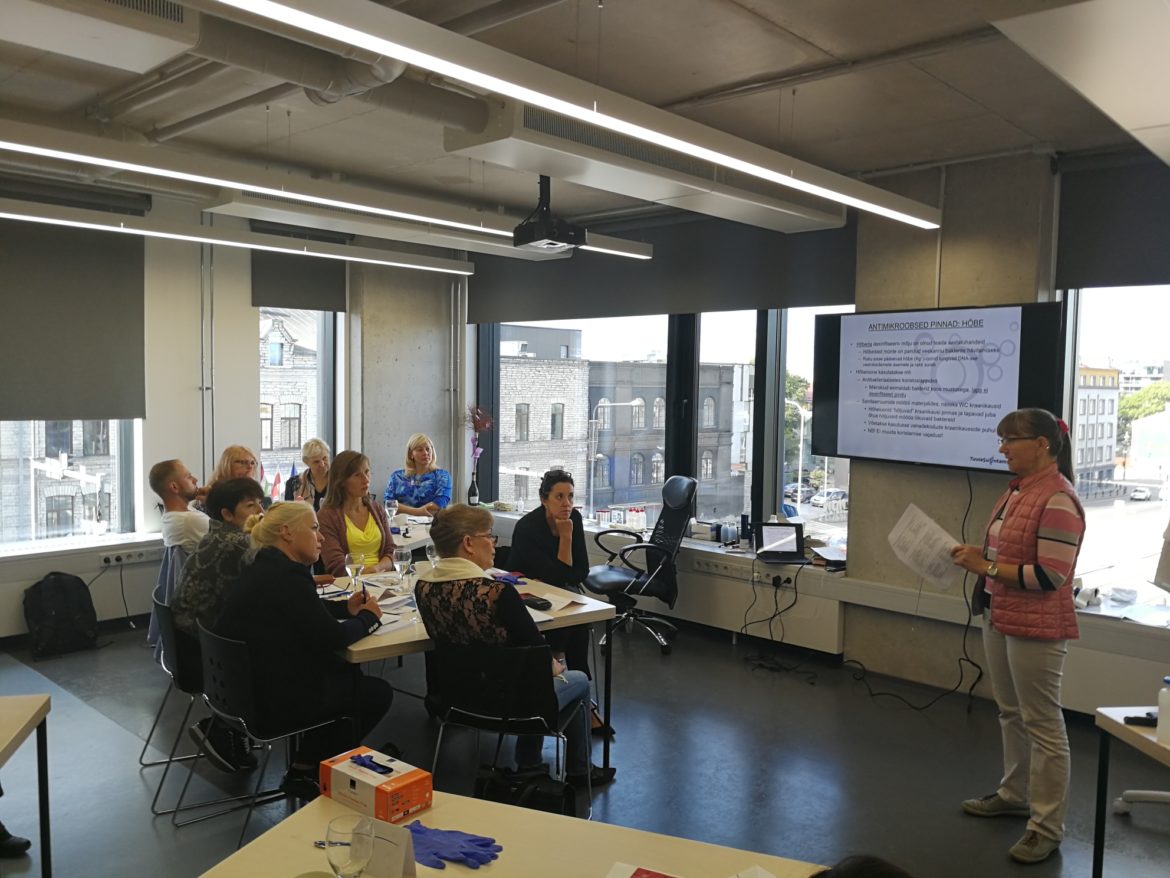info@puhastusekspert.ee +372 5611 1048
Cleaning Chemistry from a Scientist’s Perspective
 The Puhastusekspert team is pleased to announce that on September 12–13, 2018, Tuula Suontamo from Finland conducted a training for us. She has carried out numerous independent studies, measured surface cleanliness, and researched the compositions of various cleaning agents. Her training topic this time was “Practical Cleaning Chemistry from a Scientist’s Perspective”.
The Puhastusekspert team is pleased to announce that on September 12–13, 2018, Tuula Suontamo from Finland conducted a training for us. She has carried out numerous independent studies, measured surface cleanliness, and researched the compositions of various cleaning agents. Her training topic this time was “Practical Cleaning Chemistry from a Scientist’s Perspective”.
One of the training topics was the constituent particles in cleaning chemicals – what is added to them, and what effect they have on the cleaning process and human health. At what point do chemicals become harmful to humans? As part of cleaning chemistry, disinfecting cleaning agents and their components were also examined. Is disinfection necessary, and which agent is effective?
During the training, the indoor air that affects us daily was also discussed. When working indoors for long hours, it is important to know what dust contains, what happens when cleaning agent residues remain on surfaces, and how these residues affect our health when inhaled.
The use of various treated waters in cleaning is increasingly being discussed. Tuula Suontamo brought water with different properties, with which experiments were conducted. The experimental results were compared and analyzed. Through several experiments, the cleaning properties of water were tested on various surfaces and with different types of dirt. In addition to the experimental results, Tuula presented studies conducted in Finland with special versions of treated water.
Some conclusions from the training:
- If the fundamental cleaning technique(s) are flawed, then regardless of the cleaning agent or tool used, the desired cleaning result will not be achieved.
- Carefully cleaned surfaces do not require daily disinfection, because a clean and dry surface does not promote microbial growth.
- Effective disinfection can only be achieved on a pre-cleaned surface.
- All wet surfaces must be dried, because moisture promotes microbial growth.
- Dust is constantly in motion and transports harmful microbes, spreading diseases.
- Cleaning solution does not remain effective in dirty containers, so moistening and spray bottles must be washed regularly.
- Prefer moistening bottles over spray bottles, as they are easier to clean and do not generate as many inhalable volatile compounds during use. Increasing links are being found between the use of spray cleaning agents and asthma.
Of course, there were many important conclusions and aspects easily applicable to daily work processes, which you will learn more about in our trainings. Check out our training calendar.